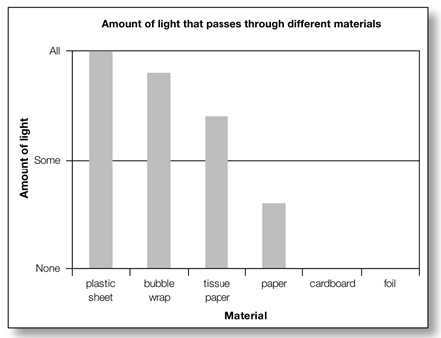Plants use the _____ to create their own energy.
sun
What two main categories can all animals be split into?
Vertebrates and invertibrates
The jelly like substance that all the cell parts float around in
Cytoplasm
The parts of an experiment that are not changed are called the
constant(s)
What is a compound?
A compound is two or more atoms combined
The process in which plants use energy from the sun and turn it into food.
Photosynthesis
An invertebrate does not have this feature
A backbone
This is the brain of the cell
Nucleus
A predicted outcome of an experiment.
hypothesis
Name the three types of tectonic plate boundaries
Transform (where plates slide past each other)
Divergent (where two plates move apart),
Convergent (where two plates collide and subduction occurs)
What two categories can we sort plants into?
Vascular and nonvascular
A special skill which helps an animal to survive and do everything it needs to do.
Adaptation
Spaces that hold nutrients, water, and waste. Look very different in plants and animals.
Vacuole.
The process of testing a hypothesis through manipulating variables to see the results.
Experiment
What type of waves are light waves?
Transverse
Because plants do not consume another living thing for energy, they are considered this part of a food chain.
Producer
A group of students tested the effects of different amounts of water on ivy plant growth. Afterwards, they could not remember how much each plant grew per day. What should they have done to practice good science?
A: Discuss their observations with other groups in their class.
B: Conduct the experiment with more than one type of plant.
C: Record daily information in a data table.
D: Make up explanations for the results
Record daily information in a data table.
In a mouse, this part of a cell surrounds the entire cell and determines what comes in and out of the cell.
Cell membrane
The part of an experiment being changed or altered by the experimenter
Independent variable
What are all of the geographical features of the ocean- starting close to shore and moving outward? I am looking for four parts.
Continental shelf, continental slope, continental rise, abyssal plain.
Name the three feature of vascular plants that non vascular plants do not have.
Stems, roots, leaves.
Kylie wanted to design an investigation to observe amoeba, a small single-celled organism that can be found in pond water.

Her investigation design is to place a few drops of ice water onto a cavity slide already containing pond water with amoeba, and then observe.
Which of the following is most likely Kylie's investigation question?
A: How does the movement of amoeba respond to changes in light?
B: How does the movement of amoeba respond to changes in temperature?
C: How does the temperature of the water affect the number of plants in the pond?
D: How does the pH of the pond water affect the movement of amoeba?
B: How does the movement of amoeba respond to changes in temperature?
Name the two cell parts only found in plants
Cell walls, chloroplast
This is the outcoming that is being measured during an experiment.
The dependent variable
Based on the graph, which two materials are opaque?

Cardboard and Foil